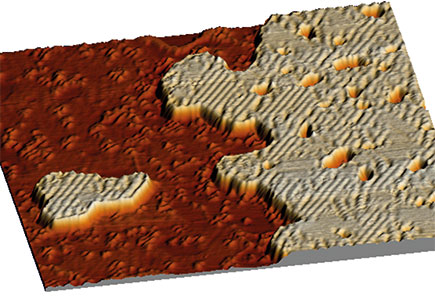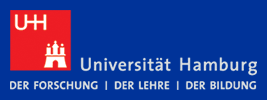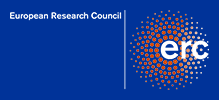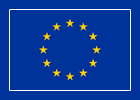Projects
Project Area A |
|
|
Superconductivity in low-dimensional systemsJens Wiebe |
||
 The properties of elemental superconductors are heavily affected by the dimensionality of the superconductor, e.g. in thin layers or laterally confined islands (see picture). Moreover, the purity of the material, which can be strongly improved by molecular beam epitaxy (MBE), can have dramatic effects on the superconducting transition temperature Tc. We study such effects by low-temperature scanning tunneling spectroscopy. For the example of the rare earth elementary superconductor lanthanum, previous studies using spatially averaging techniques as, e.g., planar tunneling, point contact spectroscopy, or transport measurements, reported Tclit=5K for the stable hexagonal phase of lanthanum. We performed the first local scanning tunneling spectroscopy study of the superconducting energy gap of lanthanum, which enables an in-situ correlation of the material's purity and Tc. Thereby, we showed that Tc can get as high as 7K for the cleanest samples we were able to grow, while it was considerably smaller for dirtier samples, and close to the previously reported values. This result is of importance for the future use of MBE grown layers of the notoriously reactive rare earth elements in nanoscale superconductor devices. The properties of elemental superconductors are heavily affected by the dimensionality of the superconductor, e.g. in thin layers or laterally confined islands (see picture). Moreover, the purity of the material, which can be strongly improved by molecular beam epitaxy (MBE), can have dramatic effects on the superconducting transition temperature Tc. We study such effects by low-temperature scanning tunneling spectroscopy. For the example of the rare earth elementary superconductor lanthanum, previous studies using spatially averaging techniques as, e.g., planar tunneling, point contact spectroscopy, or transport measurements, reported Tclit=5K for the stable hexagonal phase of lanthanum. We performed the first local scanning tunneling spectroscopy study of the superconducting energy gap of lanthanum, which enables an in-situ correlation of the material's purity and Tc. Thereby, we showed that Tc can get as high as 7K for the cleanest samples we were able to grow, while it was considerably smaller for dirtier samples, and close to the previously reported values. This result is of importance for the future use of MBE grown layers of the notoriously reactive rare earth elements in nanoscale superconductor devices.
Picture: STM topograph of superconducting La islands of different thicknesses |
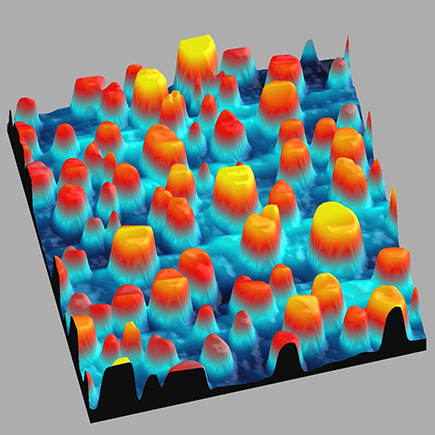 |
|
Investigating the basic interactions between magnetic adlayers and superconductorsThomas Elbo |
||
|
Picture: STM topography of single layer Fe islands on a Ta(110)-surface |
|
Study of low-dimensional induced superconductivity at interfaces with elemental superconductorsVladimir Zdravkov |
||
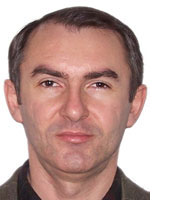 The unique possibility to explore the quantum properties of condensed matter on the macroscale keeps superconductivity in the focus of basic and applied research. The recent boost of superconducting transition temperatures in low-dimensional systems and at interfaces with normal, non-superconducting materials trigger new efforts to understand and to explore superconductivity on the atomic scale. Unconventional pairing mechanisms and exotic quasi-particles, arising at interfaces with non-collinear spin states, proximity induced, especial spatially inhomogeneous Fulde-Ferrel-Larkin-Ovchinnikov superconducting states will be in the focus of our research on metal based heterostructures. Scanning tunneling microscopy/spectroscopy (STM/STS) has a great potential to study such systems due to its lateral, energy and spin resolution capabilities. However, preconditions for exciting experiments are clean samples which is a challenging task for most classes of superconducting materials. We aim at preparing and investigating on the atomic scale metal based low-dimensional superconducting heterostructures utilizing the unique possibilities of in situ growth and in situ characterization by sub-Kelvin scanning tunneling microscopy and spectroscopy with spin-sensitivity. The unique possibility to explore the quantum properties of condensed matter on the macroscale keeps superconductivity in the focus of basic and applied research. The recent boost of superconducting transition temperatures in low-dimensional systems and at interfaces with normal, non-superconducting materials trigger new efforts to understand and to explore superconductivity on the atomic scale. Unconventional pairing mechanisms and exotic quasi-particles, arising at interfaces with non-collinear spin states, proximity induced, especial spatially inhomogeneous Fulde-Ferrel-Larkin-Ovchinnikov superconducting states will be in the focus of our research on metal based heterostructures. Scanning tunneling microscopy/spectroscopy (STM/STS) has a great potential to study such systems due to its lateral, energy and spin resolution capabilities. However, preconditions for exciting experiments are clean samples which is a challenging task for most classes of superconducting materials. We aim at preparing and investigating on the atomic scale metal based low-dimensional superconducting heterostructures utilizing the unique possibilities of in situ growth and in situ characterization by sub-Kelvin scanning tunneling microscopy and spectroscopy with spin-sensitivity. |
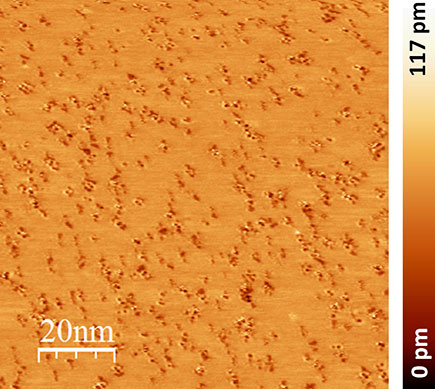
Picture: STM topography of a Ta(110) substrate after surface cleaning treatments |
|
Project Area B |
||
Probing the effect of individual magnetic adatoms on superconductorsAnand Kamlapure |
||
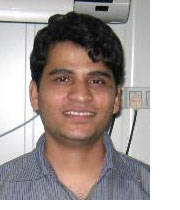 It is known that a magnetic impurity in a superconductor has a pair breaking effect and produces intragap states associated with low energy quasiparticle bound states. Recent advancements in the study of the interplay between magnetism and superconductivity revealed rich physics associated with quantum phase transitions and indicated that single spins on superconductors are promising candidates for quantum information processing and data storage. In this project we intend to study the interaction between individual spin states with the superconducting ground state using both inelastic scanning tunneling spectroscopy (ISTS) and spin resolved STS. We would also like to manipulate the magnetic adatoms between different sites of the substrate atomic lattice and manipulate the spin states with the ultimate goal of building atomic scale hybrid structures to look for Majorana fermions and other unprecedented novel phenomena. The experiments will be carried out in low temperature STM down to 1K and in magnetic fields up to 3T. It is known that a magnetic impurity in a superconductor has a pair breaking effect and produces intragap states associated with low energy quasiparticle bound states. Recent advancements in the study of the interplay between magnetism and superconductivity revealed rich physics associated with quantum phase transitions and indicated that single spins on superconductors are promising candidates for quantum information processing and data storage. In this project we intend to study the interaction between individual spin states with the superconducting ground state using both inelastic scanning tunneling spectroscopy (ISTS) and spin resolved STS. We would also like to manipulate the magnetic adatoms between different sites of the substrate atomic lattice and manipulate the spin states with the ultimate goal of building atomic scale hybrid structures to look for Majorana fermions and other unprecedented novel phenomena. The experiments will be carried out in low temperature STM down to 1K and in magnetic fields up to 3T.
Picture: Magnetic atoms on the surface of a superconductor covered by an oxide layer |
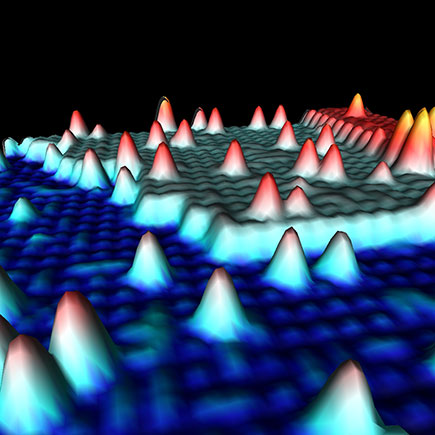 |
|
Project Area C |
||
Study of interfacial superconductivity in low-dimensional chalcogenides by SP-STMSujit Manna |
||
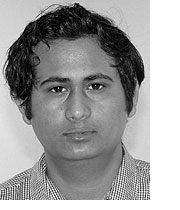 The discovery of superconductivity in Fe-based materials marked an exciting turning point in the study of high-Tc and unconventional superconductivity. In high-Tc materials the superconductivity and magnetic order often occur in close proximity. Small changes of the doping, pressure, chemical composition and interface can turn a material magnetically ordered or superconducting. Understanding the relation between these two properties is believed to be the key to a fundamental understanding of the physics of unconventional superconductivity in these materials. The strength of the antiferromagnetic exchange coupling in the magnetic state is, in some theoretical models, related to the Cooper pairing energy in the superconducting state. However, experiments on rather complex material systems often suffer from material imperfections or from a lack of tunability of materials properties within a wide range. Therefore, constructing and investigating various kinds of low-dimensional chalcogenide systems in a bottom-up fashion are long standing goals. In this project we utilize sub-Kelvin scanning tunneling microscopy and spectroscopy with spin-sensitivity to study the quantum mechanical states of correlated electron materials both in real and momentum space. The discovery of superconductivity in Fe-based materials marked an exciting turning point in the study of high-Tc and unconventional superconductivity. In high-Tc materials the superconductivity and magnetic order often occur in close proximity. Small changes of the doping, pressure, chemical composition and interface can turn a material magnetically ordered or superconducting. Understanding the relation between these two properties is believed to be the key to a fundamental understanding of the physics of unconventional superconductivity in these materials. The strength of the antiferromagnetic exchange coupling in the magnetic state is, in some theoretical models, related to the Cooper pairing energy in the superconducting state. However, experiments on rather complex material systems often suffer from material imperfections or from a lack of tunability of materials properties within a wide range. Therefore, constructing and investigating various kinds of low-dimensional chalcogenide systems in a bottom-up fashion are long standing goals. In this project we utilize sub-Kelvin scanning tunneling microscopy and spectroscopy with spin-sensitivity to study the quantum mechanical states of correlated electron materials both in real and momentum space. |
||
 After its discovery, high temperature superconductivity (high Tc Sc) provoked a rush on the search for highest critical temperatures in order to implement such materials in technological applications at ambient conditions. Moreover, utilizing high Tc Sc in modern electronic devices entails the need for combining Sc and magnetism, two fundamental effects generally repelling each other.
After its discovery, high temperature superconductivity (high Tc Sc) provoked a rush on the search for highest critical temperatures in order to implement such materials in technological applications at ambient conditions. Moreover, utilizing high Tc Sc in modern electronic devices entails the need for combining Sc and magnetism, two fundamental effects generally repelling each other.